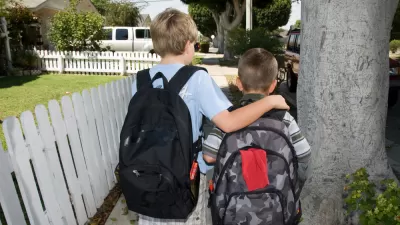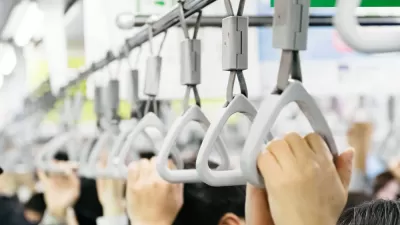Susan Elkin points to alarmingly low statistics on the number of children who walk to school, especially when compared with historic rates. She lays out some “blindingly obvious” and “child-centered” reasons why this trend needs to be reversed.

Elkin writes, “[a] study from the University of Westminster has this week shown that only 25 per cent of primary school pupils now travel home alone as opposed to 86 per cent in 1971 and 76 per cent today in Germany.” She outlines five reasons why it should be normal rather than exceptional for children to walk to school without parental supervision. These five reasons address issues such as: increasing child obesity, child development and socialization, stress- and risk-management, and even the observation of nature. Aside from these, Elkin points to a few others, including benefits to parents, car maintenance, and road congestion.
She also addresses, and debunks, the safety fears that prevent parents from allowing their children to walk to school. For example, she sites NSPCC statistics, which show that children are more likely to be killed by their own parents than by a stranger. On teaching kids about the rules of the road, she adds, “Surely if a parent walks his or her child to school until he or she is, say, eight there will have been ample time to do this?”
Elkin concludes by challenging parents to “break the mould” and to move away from “the hop-in-the-car attitude” that has become “culturally embedded” causing children to “[get] fatter, less curious and less self reliant."
FULL STORY: Only 25 per cent of children walk to school alone compared to 86 per cent in 1971. What went wrong?

Planetizen Federal Action Tracker
A weekly monitor of how Trump’s orders and actions are impacting planners and planning in America.

Maui's Vacation Rental Debate Turns Ugly
Verbal attacks, misinformation campaigns and fistfights plague a high-stakes debate to convert thousands of vacation rentals into long-term housing.

Restaurant Patios Were a Pandemic Win — Why Were They so Hard to Keep?
Social distancing requirements and changes in travel patterns prompted cities to pilot new uses for street and sidewalk space. Then it got complicated.

Charlottesville Temporarily Has No Zoning Code
A judge ordered the Virginia city to throw out its newly revised zoning code, leaving permitting for new development in legal limbo.

In California Battle of Housing vs. Environment, Housing Just Won
A new state law significantly limits the power of CEQA, an environmental review law that served as a powerful tool for blocking new development.

Boulder Eliminates Parking Minimums Citywide
Officials estimate the cost of building a single underground parking space at up to $100,000.
Urban Design for Planners 1: Software Tools
This six-course series explores essential urban design concepts using open source software and equips planners with the tools they need to participate fully in the urban design process.
Planning for Universal Design
Learn the tools for implementing Universal Design in planning regulations.
Heyer Gruel & Associates PA
JM Goldson LLC
Custer County Colorado
City of Camden Redevelopment Agency
City of Astoria
Transportation Research & Education Center (TREC) at Portland State University
Jefferson Parish Government
Camden Redevelopment Agency
City of Claremont





























